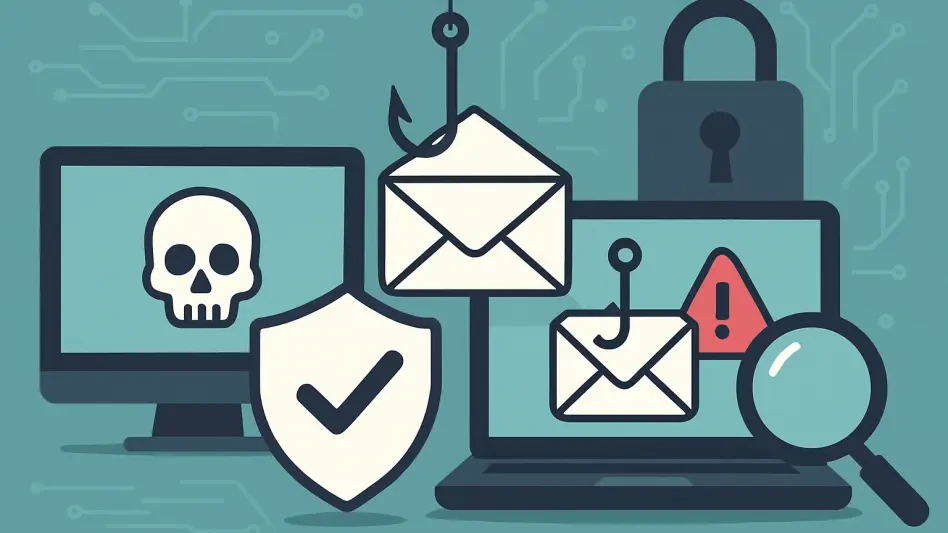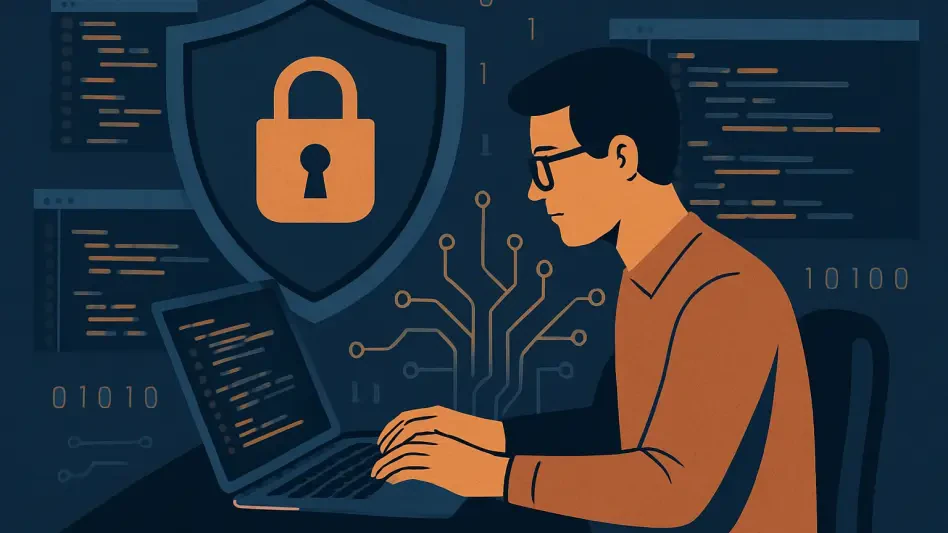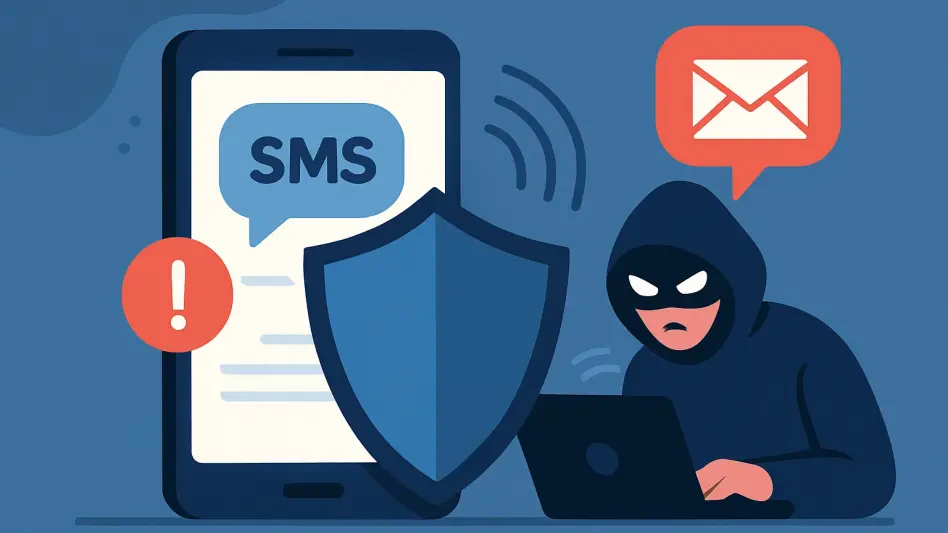In an era where cyber threats are evolving at an unprecedented pace, phishing attacks have transformed from clumsy, typo-ridden emails into sophisticated, AI-driven campaigns that can deceive even the most cautious individuals, posing a severe risk to organizations of all sizes. These modern attacks, often powered by readily available phishing kits, enable cybercriminals to craft highly targeted spearphishing efforts in mere hours. The consequences of a successful phishing attempt are dire, ranging from stolen sensitive data to disrupted operations and irreparable damage to a company’s reputation. As these threats become more polished and harder to detect, the urgency for businesses to adopt advanced solutions grows. Traditional security measures are increasingly inadequate against such cunning tactics, leaving security teams struggling to keep up. This pressing challenge underscores the need for innovative approaches, particularly automation, to detect and neutralize phishing threats swiftly and effectively, safeguarding critical data from theft.
1. Understanding the Rise of Sophisticated Phishing Threats
Phishing has undergone a dramatic evolution, moving far beyond the simplistic scams of the past to become a formidable weapon in the hands of cybercriminals. Today’s attacks leverage artificial intelligence to create messages that are not only free of grammatical errors but also highly personalized, making them nearly indistinguishable from legitimate communications. These AI-driven tactics, combined with the accessibility of pre-built phishing kits, allow even those with minimal technical expertise to launch convincing campaigns. The speed and scale at which these attacks can be deployed are alarming, as attackers can target thousands of individuals or specific high-value employees with tailored spearphishing efforts. For businesses, the stakes are incredibly high, as a single breach can expose confidential information, halt operations, and erode trust among clients and partners. The growing complexity of these threats demands a shift in how organizations approach cybersecurity, emphasizing the need for faster, more reliable detection methods to stay ahead of malicious actors.
The impact of phishing on businesses extends beyond immediate financial losses, often leading to long-term consequences that can be difficult to recover from. A successful attack can compromise customer data, trade secrets, or internal communications, resulting in regulatory penalties and loss of competitive advantage. Moreover, the reputational harm caused by such incidents can deter potential clients and partners, affecting future revenue streams. Traditional email filters and manual detection processes are increasingly ineffective against these advanced threats, as attackers continuously adapt their methods to bypass conventional defenses. Security Operations Centers (SOCs), even when well-equipped, often find themselves overwhelmed by the sheer volume of potential threats and the challenge of distinguishing genuine risks from false positives. This gap in protection highlights the critical need for automated solutions that can match the sophistication of modern phishing campaigns and provide real-time defense against data theft.
2. Challenges in Detecting Modern Phishing Attacks
One of the primary obstacles in combating today’s phishing attacks is the unprecedented precision enabled by artificial intelligence. Attackers now craft emails and messages that mimic legitimate correspondence with uncanny accuracy, devoid of the telltale signs like spelling mistakes that once made phishing easy to spot. These polished communications often target specific individuals or roles within an organization, increasing the likelihood of success. Additionally, the widespread availability of phishing kits has democratized cybercrime, allowing novices to execute professional-grade campaigns without needing deep technical knowledge. Such tools lower the barrier to entry, flooding the digital landscape with threats that are both numerous and difficult to detect. As a result, organizations face a constant barrage of potential attacks, each more deceptive than the last, straining existing security measures to their limits and exposing vulnerabilities in traditional approaches.
Beyond the sophistication of content, phishing attacks employ advanced evasion techniques that further complicate detection efforts. Tactics such as embedding malicious links in QR codes, using fake CAPTCHAs, and orchestrating multi-step redirect chains are designed to slip past standard email filters and secure gateways. These methods exploit the limitations of conventional tools, which often rely on static signatures or known indicators of compromise. Even well-resourced SOC teams struggle to sift through the noise, as distinguishing real threats from benign activity becomes a time-consuming endeavor. The delays in identifying and responding to phishing attempts heighten the risk of data breaches, as every moment a threat goes undetected increases the chance of compromise. This persistent challenge underscores the inadequacy of manual processes and outdated systems in addressing the dynamic nature of phishing, pushing the need for innovative, automated technologies to bridge the gap in cybersecurity defenses.
3. Leveraging Interactive Analysis to Combat Phishing
To counter the evolving menace of phishing, many organizations are turning to interactive analysis as a cornerstone of their defense strategy. Unlike traditional security tools that scan for predefined threat indicators, interactive analysis simulates the entire attack journey as if a real user were engaging with the suspicious email or file. This method uncovers hidden tactics, such as layered redirects or deceptive login pages, by following the attack path from initial lure to final payload. By providing a comprehensive view of the threat’s behavior, this approach equips security teams with the insights needed to understand and neutralize phishing attempts before they result in data loss. The shift toward such dynamic analysis marks a significant departure from static, reactive measures, offering a proactive way to stay ahead of increasingly cunning cybercriminals.
Interactive sandboxes have emerged as a vital tool in this fight, enabling detailed examination of phishing attacks in a controlled environment. These platforms replicate user interactions to expose every step of a malicious campaign, revealing tricks that would otherwise remain concealed. By mapping out the full execution chain, security teams gain actionable intelligence that can be used to block threats effectively. This level of visibility is crucial for addressing the sophisticated evasion tactics employed by modern attackers, ensuring that even the most cleverly disguised phishing attempts are identified and mitigated. As phishing continues to grow in complexity, the adoption of interactive analysis through sandboxes represents a forward-thinking solution that empowers organizations to protect sensitive data and maintain operational integrity against relentless cyber threats.
4. Case Study: Unmasking a Multi-Stage Phishing Attack
A real-world example involving Hitachi Energy illustrates the deceptive nature of modern phishing campaigns and the power of automation in uncovering them. The attack began with what appeared to be a legitimate HR email from “Hitachi Energy,” urging employees to review a new company policy. With its polished design, urgent tone, and even a faux security reminder, the email easily bypassed traditional filters and could have fooled unsuspecting staff. Such tactics highlight how attackers exploit trust in familiar branding and authority to lure victims into engaging with malicious content. The subtlety and professionalism of the email underscore the growing difficulty in distinguishing phishing attempts from genuine communications, emphasizing the limitations of conventional security measures in addressing these threats.
Through the use of automated analysis, the intricate layers of this phishing attempt were systematically unraveled in a secure environment. The technology dissected the email’s components, revealing its malicious intent without risking exposure to real systems or users. This process exposed hidden elements that traditional tools might have missed, providing a clear picture of the attack’s structure and objectives. By simulating user interaction, the analysis traced the attack’s progression from the initial deceptive email to its ultimate goal of data theft. This case demonstrates how automation can transform phishing detection, offering speed and precision that manual methods cannot match. The ability to safely deconstruct such attacks ensures that organizations can respond effectively, protecting their data and employees from sophisticated cyber threats.
5. Step-by-Step Automation in Phishing Detection
The process of automated phishing detection involves several critical steps, beginning with spotting malicious attachments that often serve as the entry point for attacks. In many cases, a seemingly harmless PDF or document hides a QR code designed to evade email security systems. Automated sandboxes can flag such suspicious behavior instantly, identifying elements that deviate from normal patterns. This early detection is vital, as it prevents employees from interacting with deceptive content that could lead to hidden threats. By catching these anomalies at the outset, automation ensures that potential risks are addressed before they escalate, providing a first line of defense against phishing campaigns that rely on user interaction to succeed.
Following initial detection, automation extracts hidden links by simulating user actions, such as scanning a QR code to retrieve an embedded malicious URL. This URL is then opened in a virtual browser, continuing the attack chain without requiring manual intervention. The process also overcomes barriers like Cloudflare CAPTCHAs, which attackers use to thwart automated tools, by mimicking human behavior to bypass them. Further steps reveal credential harvesting pages, such as fake Microsoft login screens designed to steal sensitive information, providing a definitive verdict of malice. Throughout, indicators of compromise (IOCs) are collected, attack steps are mapped, and detailed reports are generated for SOC collaboration. These IOCs can be integrated into SIEM/SOAR systems to refine detection rules, educate employees, and build robust strategies against future data theft attempts, ensuring a comprehensive defense mechanism.
6. Advantages of Automation in Strengthening Phishing Response
Automation offers transformative benefits in phishing response, starting with faster and more reliable decision-making. By moving from identifying a suspicious email to reaching an evidence-backed verdict in minutes, organizations can significantly reduce downtime and the risk of data theft. This rapid turnaround minimizes financial exposure and prevents the escalation of incidents that could otherwise lead to severe consequences. The ability to make swift, informed decisions is particularly crucial in high-pressure environments where every second counts. As phishing attacks grow in frequency and sophistication, the speed provided by automated systems becomes a decisive factor in maintaining security and protecting valuable assets from compromise.
Additionally, automation brings cost efficiency and optimized resource allocation to phishing defense strategies. By handling detection end-to-end, it reduces the need for repetitive manual checks, allowing teams to manage more incidents without increasing headcount. Junior staff can confidently triage phishing threats with automated support, while senior analysts focus on complex tasks like threat hunting and strategic planning. This efficient use of talent lowers operational costs and enhances overall productivity. Furthermore, exposing full attack chains ensures threats are intercepted before sensitive data is stolen, reducing organizational risk. Companies leveraging such automation have reported detection and response times up to three times faster, resulting in fewer escalations, stronger compliance, and decreased incident costs, proving the tangible impact of these technologies.
7. Building a Future-Ready Defense Against Phishing
Reflecting on the advancements made in cybersecurity, it’s evident that automation has played a pivotal role in countering the ever-evolving threat of phishing over recent years. As attacks grew more sophisticated, tools that automated interactive analysis stripped away the reliance on slow, error-prone manual checks. By dissecting every hidden step of a phishing campaign, these solutions ensured that threats were neutralized before data could be compromised. The shift to automated systems marked a turning point, allowing organizations to keep pace with cybercriminals who continuously refined their tactics. This proactive stance redefined how businesses approached data protection, setting a new standard for resilience against digital threats.
Looking ahead, the focus should be on integrating actionable insights and seamless system compatibility to fortify defenses further. Detailed reports and usable indicators of compromise should be leveraged to cut investigation times and ease the burden on security analysts. Strengthening SOC integration will enable a more cohesive response to phishing, ensuring that every layer of an organization’s cybersecurity framework works in unison. As phishing tactics continue to adapt, investing in scalable automated solutions will be essential to safeguard sensitive information. Prioritizing these steps will empower businesses to anticipate and mitigate risks effectively, building a robust barrier against data theft in an increasingly complex threat landscape.








